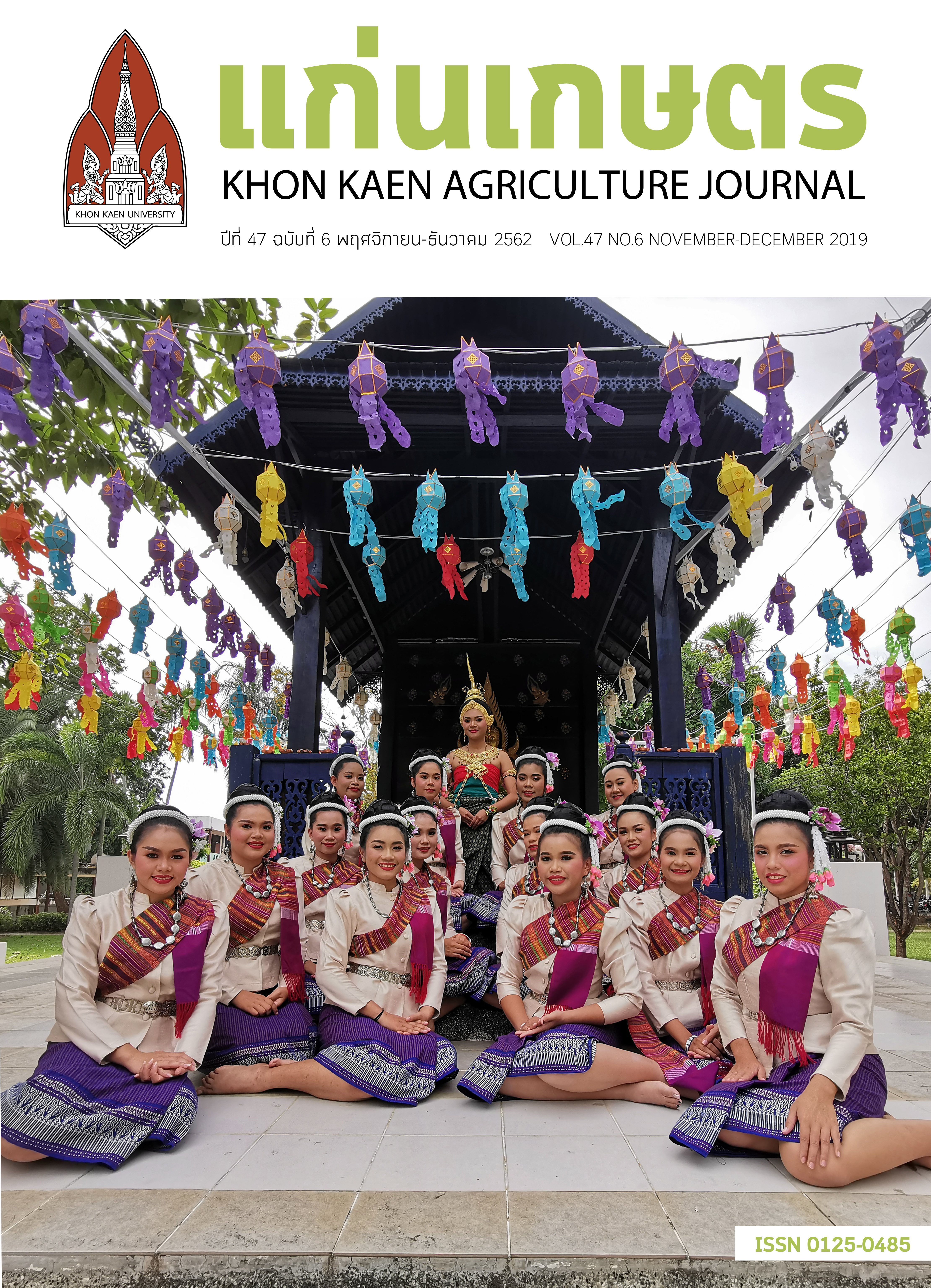Relationship of household characteristics and vegetables consumption behavior with the proportion of income spent on vegetables in Ratnapura district, Sri Lanka
Main Article Content
บทคัดย่อ
Presently, vegetables consumption of Sri Lanka is reporting a lower value. The socioeconomic conditions of the families were identified as reasons for this circumstance by several recent researches. Therefore, this study was conducted to study regarding how does consumer’s socioeconomic characteristics and their behaviors related to vegetables purchase. Ratnapura district was designated to conduct the study. The data were obtained from a face-to-face survey of 400 respondents using accidental sampling method with a structured questionnaire. Multiple regression analysis was employed to investigate the relationship between consumer’s socioeconomic characteristics and their vegetables purchasing habits on the percentage of income spent for vegetables. The results showed that arising monthly income spent less percentage of income on vegetables. The lengthening of distance to the market place, rising the frequency of visits to the market per week also increased this percentage. Moreover, the habit of preparing a list of vegetables to buy decreases this percentage.
Article Details
เอกสารอ้างอิง
Dharmasena, D.A.M., and Sarananda, K.H. 2012. Present Status, Issues and Future Trends in Fruit and Vegetable Handling, Distribution and Marketing in Sri Lanka. Available: http://www.fruits.soton.ac.uk/files/2011/12/Srilanka-6-Slides-.pdf. Accessed Mar. 20, 2017.
Hair, J.F., Black, W.C., Babin, B.J., Anderson, R.E., and Tatham, R.L. 2006. Multivariate Data Analysis. Pearson International Publishing, NJ.
Israel, G. D. 1992. Determining sample size. http://www.psycholosphere.com/Determining %20sample% 20size%20by%20Glen%20Israel.pdf. Accessed Oct. 18, 2017.
Jayasooriya, N.A. 2016. Sri Lankan consumer attitudes towards healthy meals. J. Market. Consum. Res. 24: 69-79.
Jayatillake, P. J., and Mahalianarachchi, R. P. 2007. Behavioral pattern of fruit & vegetable consumers in the ‘pola’ (fair) system in Monaragala district in Sri Lanka. J. Agr. Sci. 3: 33-43.
Nimanthika, L. D. M., and Edirisinghe, J. C. 2014. Assessing the demand for a healthy diet in Sri Lanka: the almost ideal demand system with infrequency of purchase. Sri Lanka J. Econ. Res. 2:23-41.
Ozil, P.K. 2016. What is the acceptable r-squared value? https://www.researchgate.net/post/what is the acceptable r- squared value. Accessed Nov. 25, 2018.
Sachdeva, S., Sachdev, T. R., and Sachdeva, R. 2013. Increasing fruit and vegetable consumption: challenges and opportunities. Indian J. Commun. Med. 38:192-197.
Vaidya, A., Oli, N., Aryal, U.R., Karki, D.B., and Krettek, A. 2013. Disparities in fruit and vegetable intake by socio-demographic characteristics in peri-urban Nepalese adults: findings from the Heart-Health Associated Research and Dissemination in the Community (HARDIC) study, Bhaktapur, Nepal. J. Kathmandu Med. Coll. 2:3-11.
Wijesekere, G. 2015. Changing patterns of food consumption in Sri Lanka: 1985-2009. https://EconPapers.repec.org/RePEc:pas:asarcc:2015-02. Accessed Nov. 25, 2018.


